Full text
PDF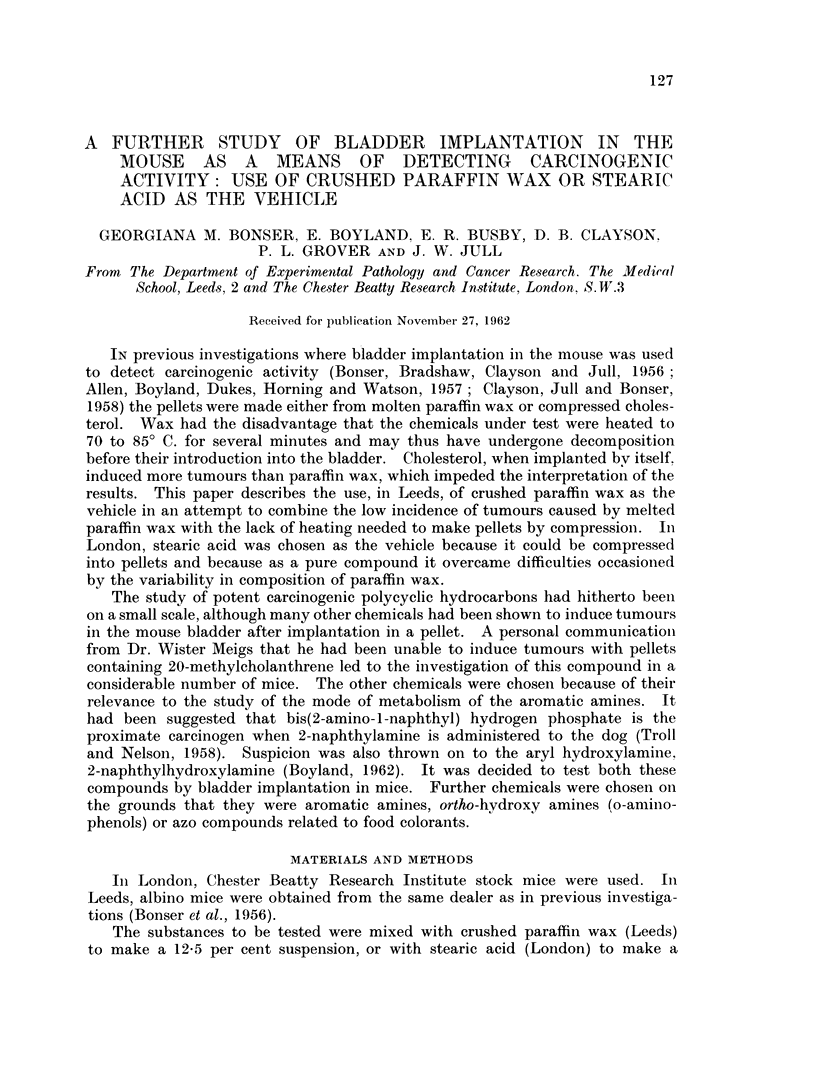
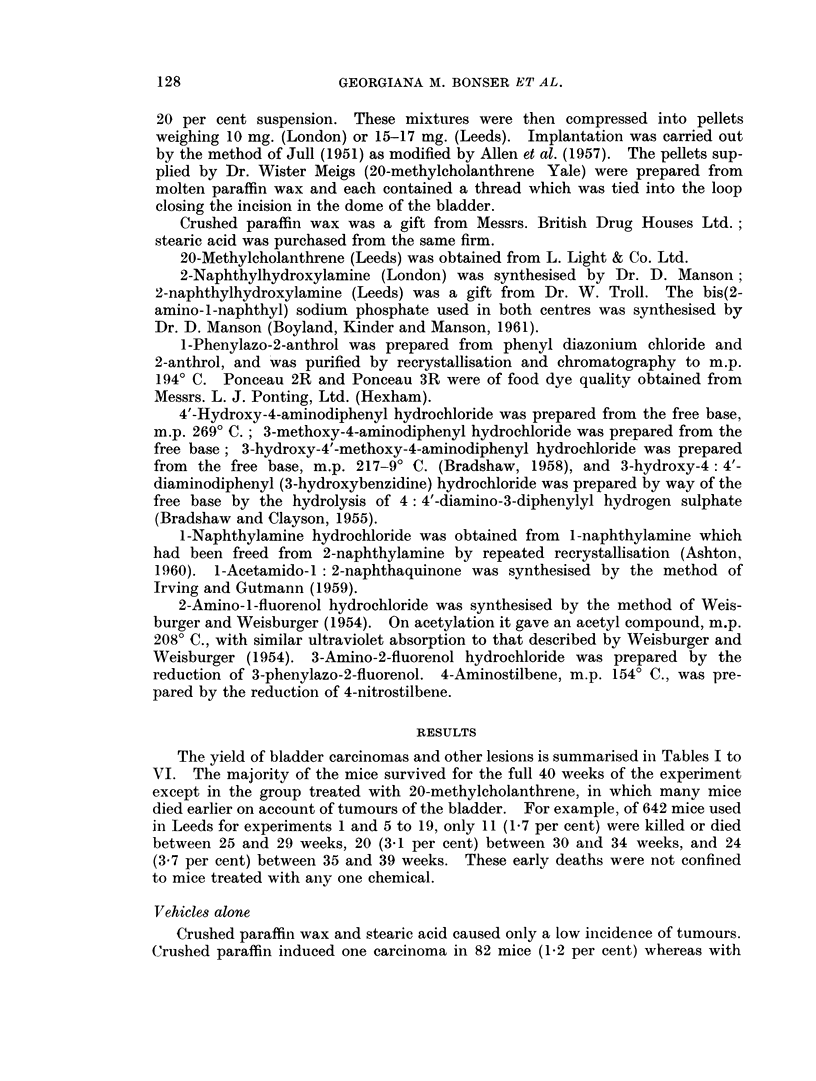
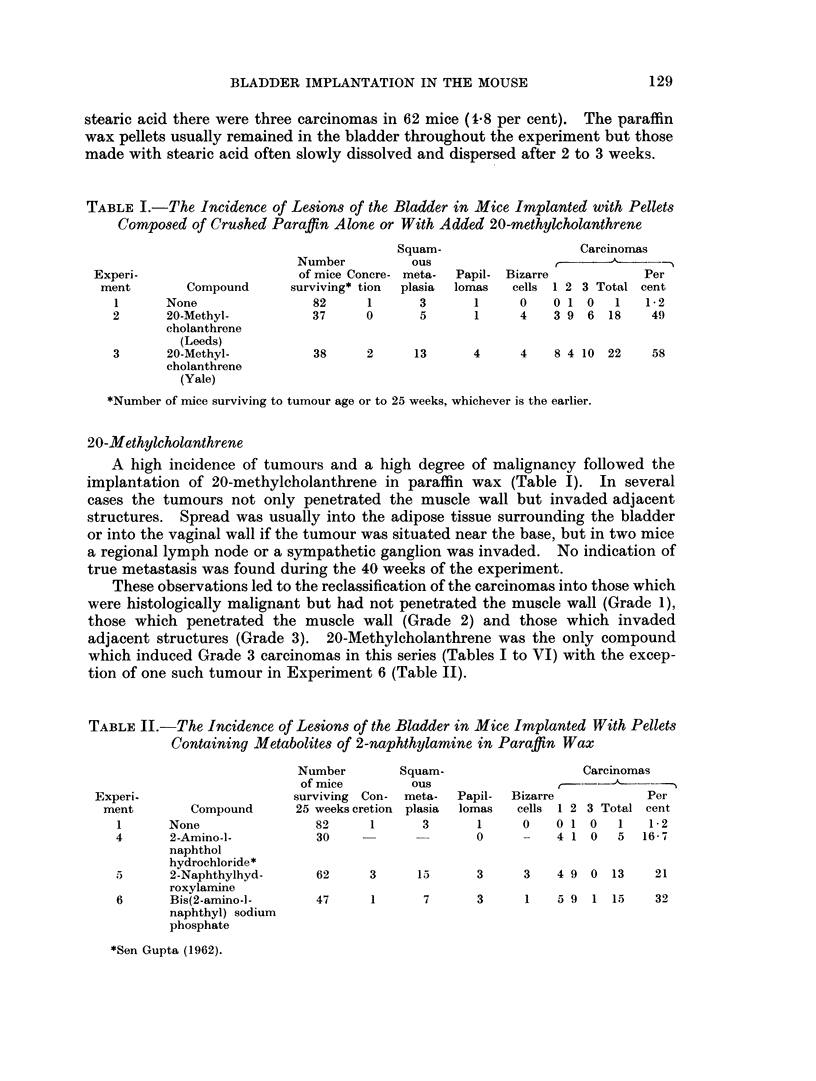
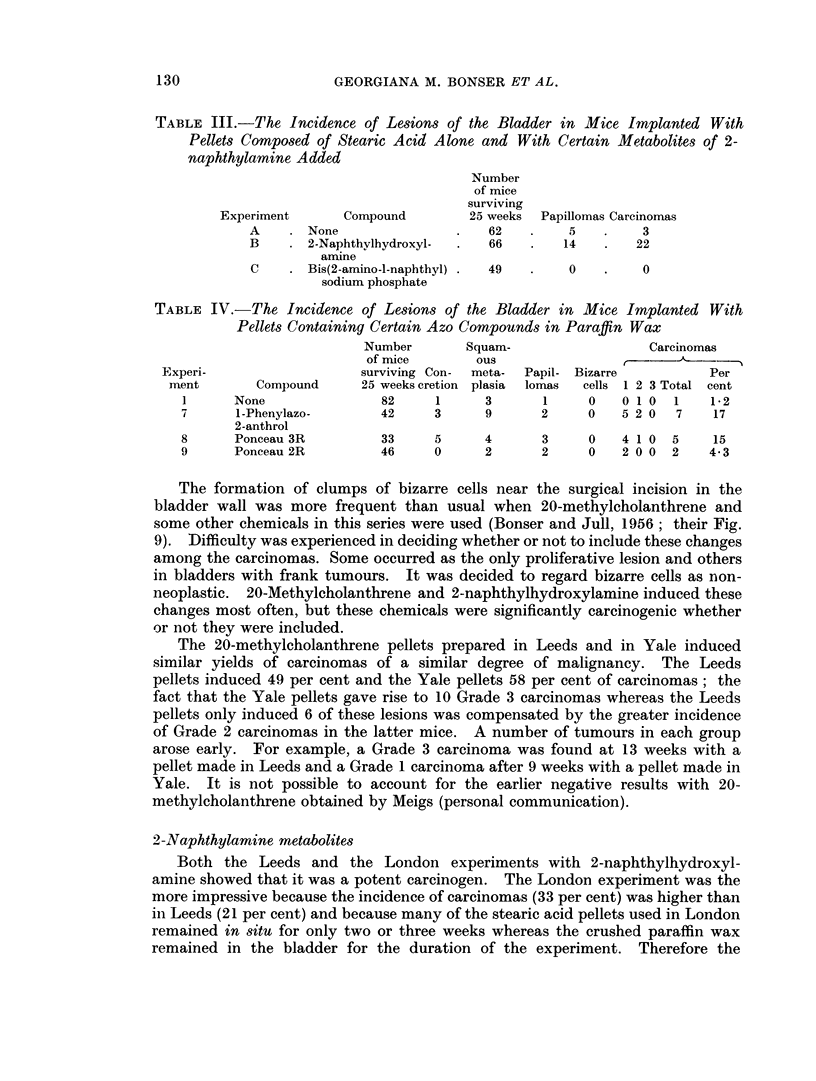
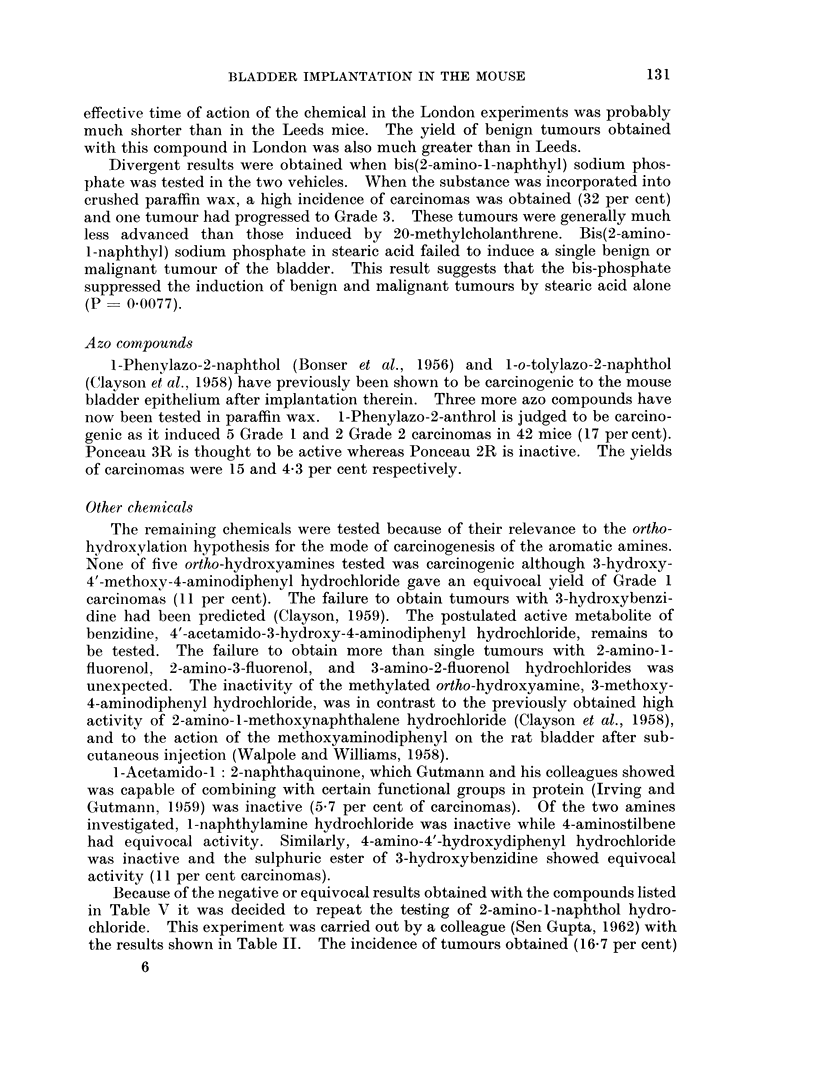
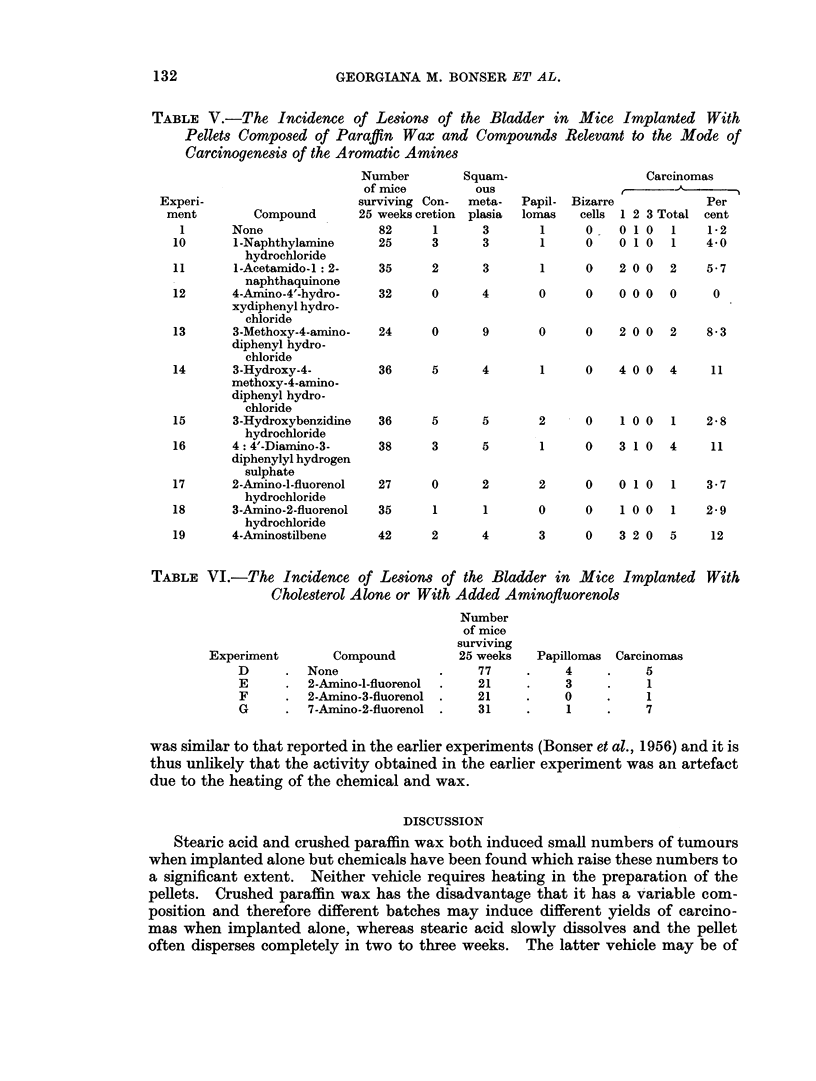
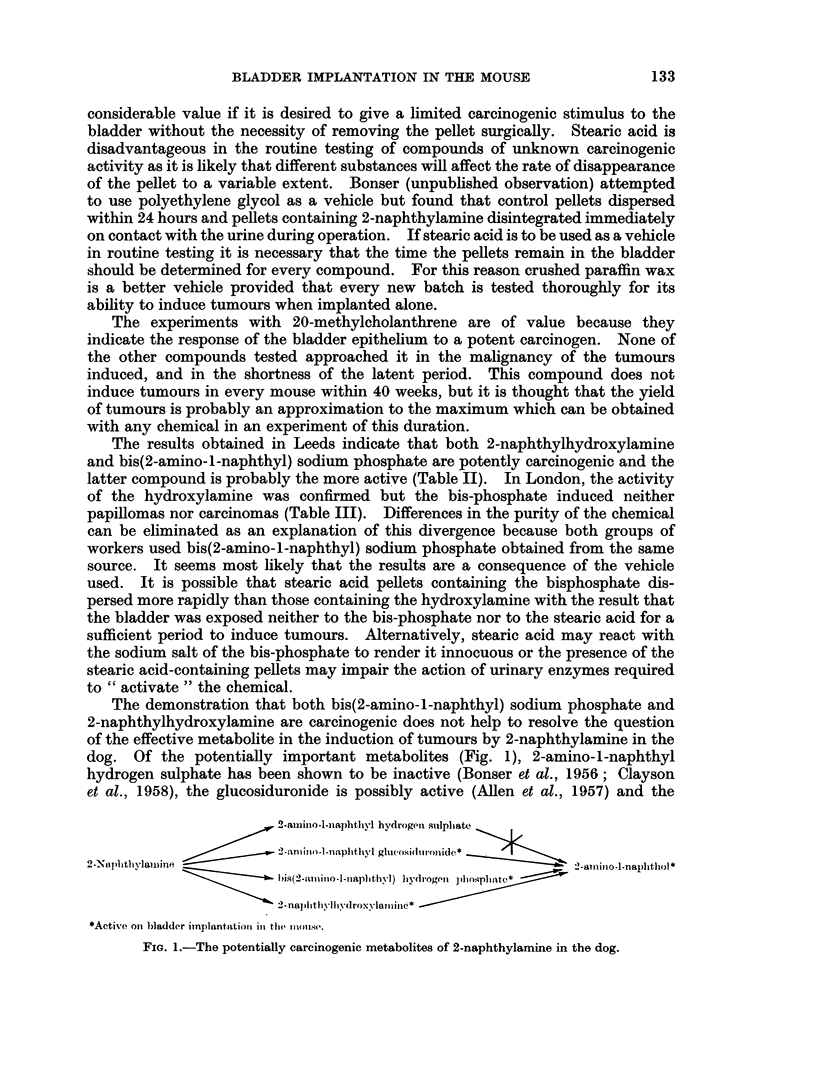
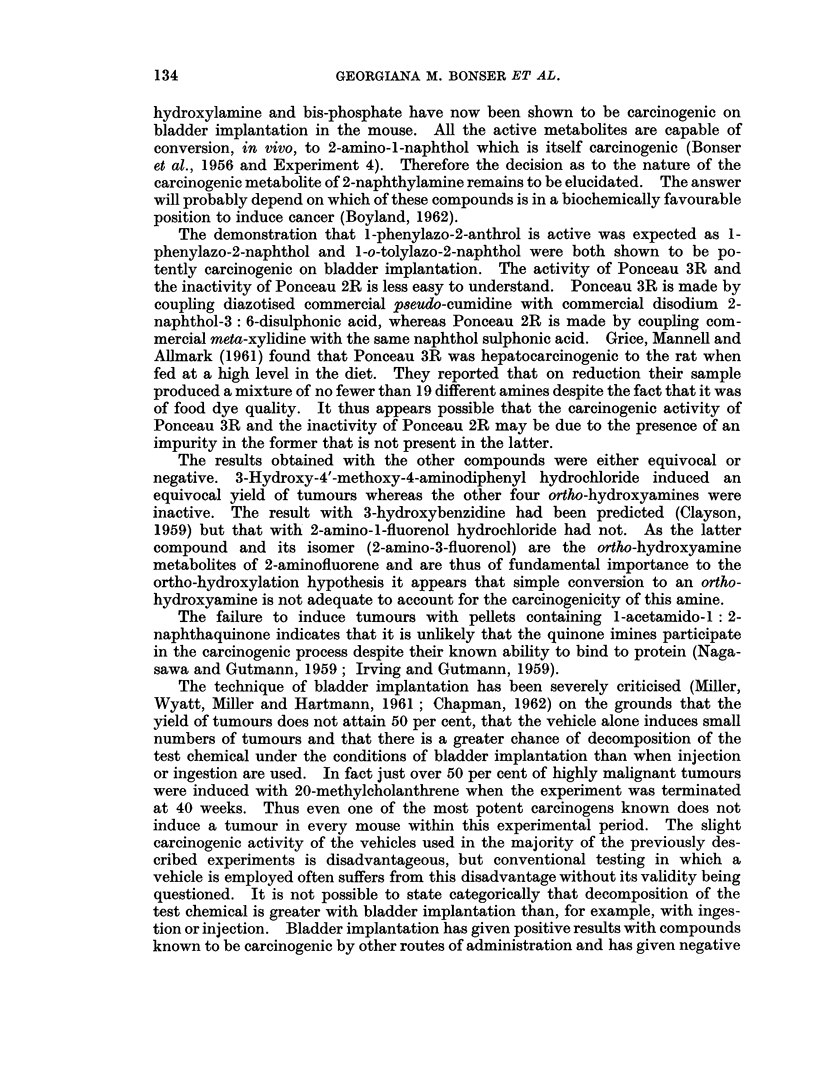
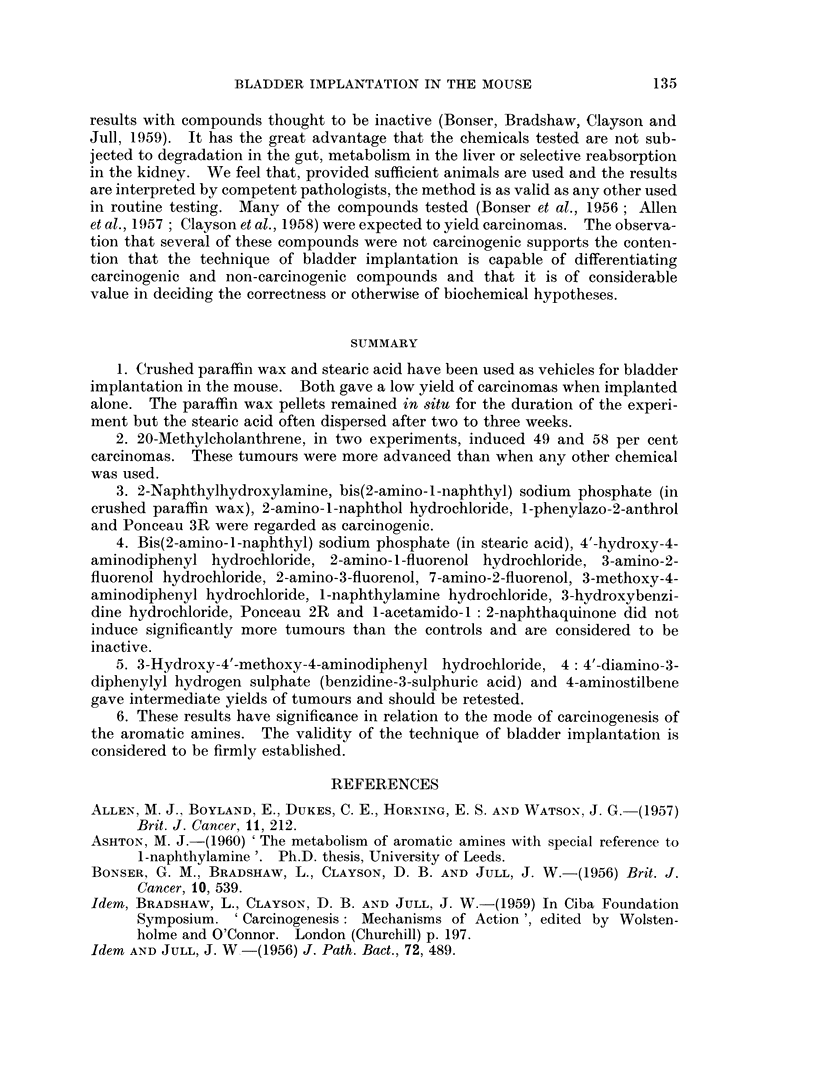
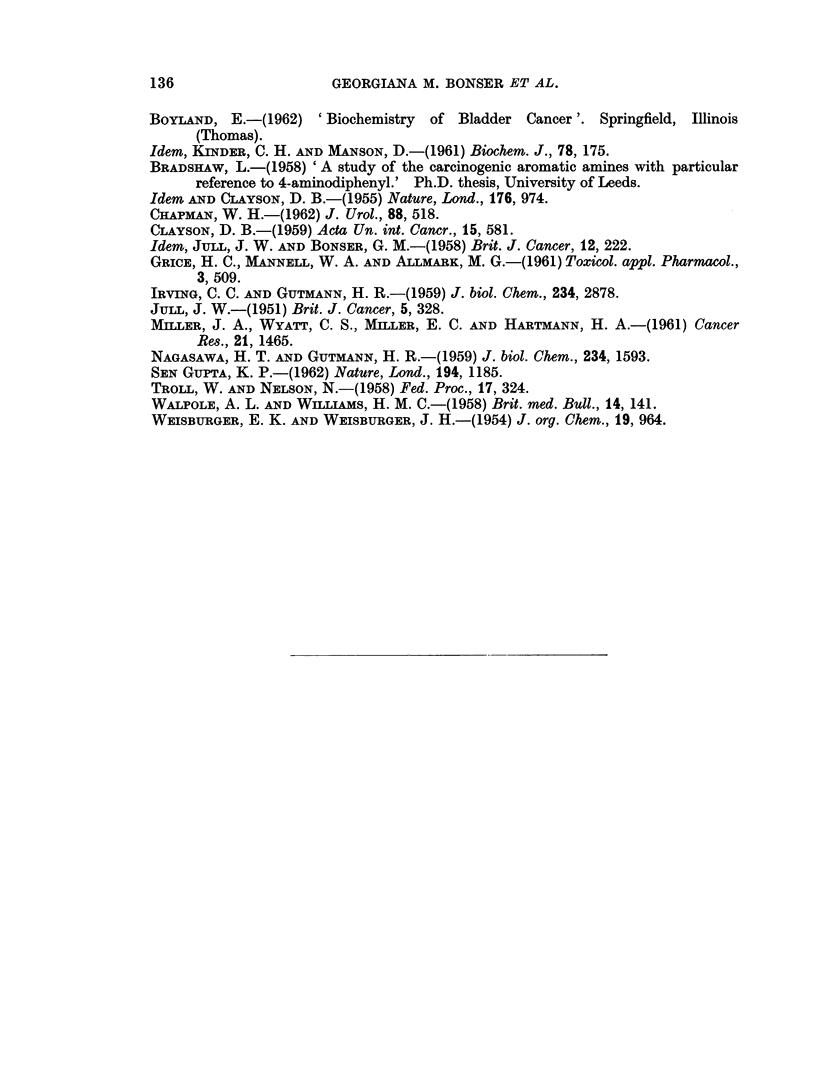
Selected References
These references are in PubMed. This may not be the complete list of references from this article.
- ALLEN M. J., BOYLAND E., DUKES C. E., HORNING E. S., WATSON J. G. Cancer of the urinary bladder induced in mice with metabolites of aromatic amines and tryptophan. Br J Cancer. 1957 Jun;11(2):212–228. doi: 10.1038/bjc.1957.29. [DOI] [PMC free article] [PubMed] [Google Scholar]
- BONSER G. M., BRADSHAW L., CLAYSON D. B., JULL J. W. A further study of the carcinogenic properties of ortho hydroxy-amines and related compounds by bladder implantation in the mouse. Br J Cancer. 1956 Sep;10(3):539–546. doi: 10.1038/bjc.1956.63. [DOI] [PMC free article] [PubMed] [Google Scholar]
- BRADSHAW L., CLAYSON D. B. Metabolism of two aromatic amines in the dog. Nature. 1955 Nov 19;176(4490):974–975. doi: 10.1038/176974a0. [DOI] [PubMed] [Google Scholar]
- Boyland E., Kinder C. H., Manson D. The biochemistry of aromatic amines. 8. Synthesis and detection of di-(2-amino-1-naphthyl) hydrogen phosphate, a metabolite of 2-naphthylamine in dogs. Biochem J. 1961 Jan;78(1):175–179. doi: 10.1042/bj0780175. [DOI] [PMC free article] [PubMed] [Google Scholar]
- CHAPMAN W. H. A method for producing bladder tumors in mice, with a technique allowing easy interpretation of the difference between hyperplasia and true tumor. J Urol. 1962 Oct;88:518–526. doi: 10.1016/S0022-5347(17)64836-5. [DOI] [PubMed] [Google Scholar]
- CLAYSON D. B., JULL J. W., BONSER G. M. The testing of ortho hydroxy-amines and related compounds by bladder implantation and a discussion of their structural requirements for carcinogenic activity. Br J Cancer. 1958 Jun;12(2):222–230. doi: 10.1038/bjc.1958.26. [DOI] [PMC free article] [PubMed] [Google Scholar]
- GRICE H. C., MANNELL W. A., ALLMARK M. G. Liver tumors in rats fed Ponceau 3R. Toxicol Appl Pharmacol. 1961 Sep;3:509–520. doi: 10.1016/0041-008x(61)90042-4. [DOI] [PubMed] [Google Scholar]
- IRVING C. C., GUTMANN H. R. Protein binding of model quinone imides. II. The interaction of some o-quinone imides with crystalline bovine serum albumin. J Biol Chem. 1959 Nov;234:2878–2884. [PubMed] [Google Scholar]
- JULL J. W. The induction of tumours of the bladder epithelium in mice by the direct application of a carcinogen. Br J Cancer. 1951 Sep;5(3):328–330. doi: 10.1038/bjc.1951.34. [DOI] [PMC free article] [PubMed] [Google Scholar]
- NAGASAWA H. T., GUTMANN H. R. The oxidation of o-aminophenols by cytochrome c and cytochrome oxidase. I. Enzymatic oxidations and binding of oxidation products to bovine serum albumin. J Biol Chem. 1959 Jun;234(6):1593–1599. [PubMed] [Google Scholar]
- SEN GUPTA K. P. Tumour-promoting action of 4-ethylsulphonylnaphthalene-1-sulphonamide. Nature. 1962 Jun 23;194:1185–1186. doi: 10.1038/1941185a0. [DOI] [PubMed] [Google Scholar]
- WALPOLE A. L., WILLIAMS M. H. Aromatic amines as carcinogens in industry. Br Med Bull. 1958 May;14(2):141–145. doi: 10.1093/oxfordjournals.bmb.a069657. [DOI] [PubMed] [Google Scholar]


